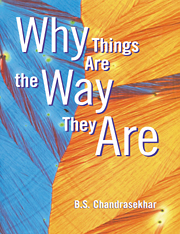Book contents
- Frontmatter
- Contents
- PREFACE
- I INTRODUCTION
- II CRYSTALS
- III PARTICLES AND WAVES
- IV THE ATOM
- V STATISTICAL PHYSICS
- VI THE QUANTUM MECHANICAL CRYSTAL
- VII COPPER WIRES AND GLASS RODS
- VIII SILVER SPOONS AND PLASTIC SPOONS
- IX GLASS PANES AND ALUMINIUM FOILS
- X ELECTRIC BULBS AND INSULATED CABLES
- XI MAGNETS
- XII SUPERCONDUCTORS
- XIII CONCLUSION
- GLOSSARY
- INDEX
III - PARTICLES AND WAVES
Published online by Cambridge University Press: 20 October 2009
- Frontmatter
- Contents
- PREFACE
- I INTRODUCTION
- II CRYSTALS
- III PARTICLES AND WAVES
- IV THE ATOM
- V STATISTICAL PHYSICS
- VI THE QUANTUM MECHANICAL CRYSTAL
- VII COPPER WIRES AND GLASS RODS
- VIII SILVER SPOONS AND PLASTIC SPOONS
- IX GLASS PANES AND ALUMINIUM FOILS
- X ELECTRIC BULBS AND INSULATED CABLES
- XI MAGNETS
- XII SUPERCONDUCTORS
- XIII CONCLUSION
- GLOSSARY
- INDEX
Summary
Some preliminaries
We have, until now, thought of atoms as tiny hard spheres that feel a force of attraction towards one another. We ignored the fact that an atom consists of a nucleus surrounded by one or more electrons. If we stopped at this, we would make little progress towards understanding the properties of solids, other than that the atoms may form crystals. We must therefore go on and take a look at the internal structure of the atom itself, and see how this changes when the atom is surrounded by other atoms in a crystal. We shall then find that we need a description that is somewhat removed from our everyday experience. There is a name for this description, quantum mechanics: mechanics, because it deals with the motion of objects, and quantum, because features of the motion, such as energy, are quantized, meaning that they can only have any one of a set of distinct values, and no other value in between. Imagine for example a car which is so constructed that it can travel only at speeds of 10, or 50, or 100 km per hour, and not at any other speed. Then we could say that the speed of the car is quantized. This idea of quantization is something alien to our usual way of thinking. After all, a car is able to go at any speed we like up to its maximum speed.
- Type
- Chapter
- Information
- Why Things Are the Way They Are , pp. 35 - 62Publisher: Cambridge University PressPrint publication year: 1997



